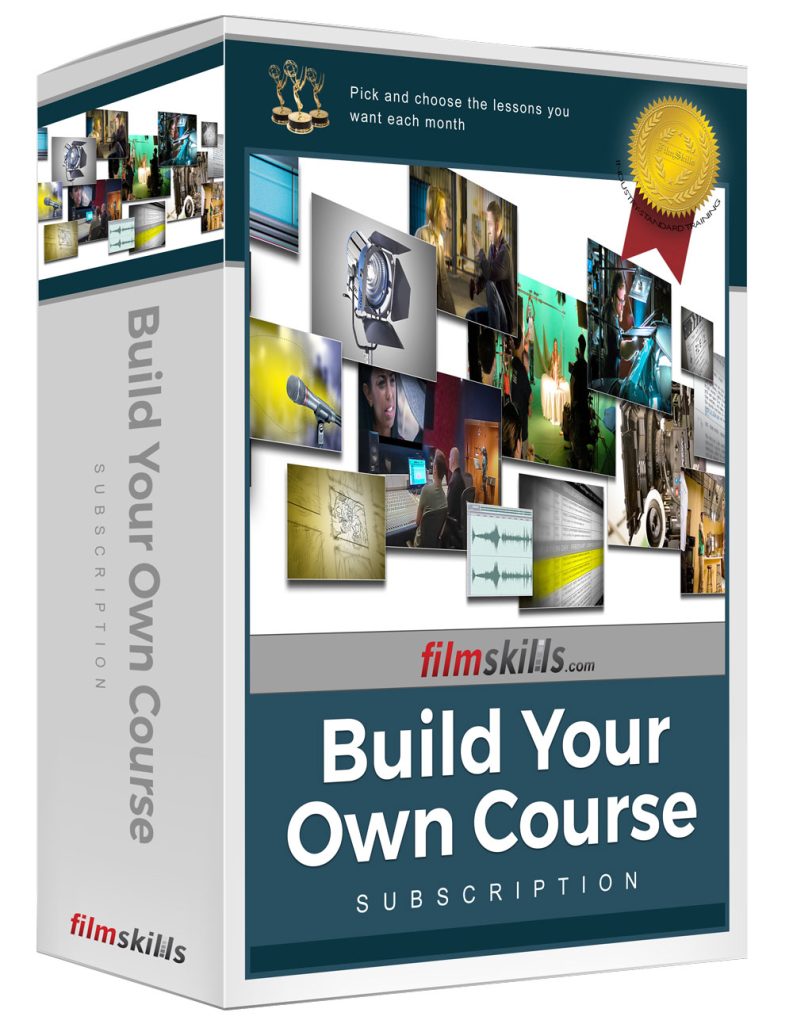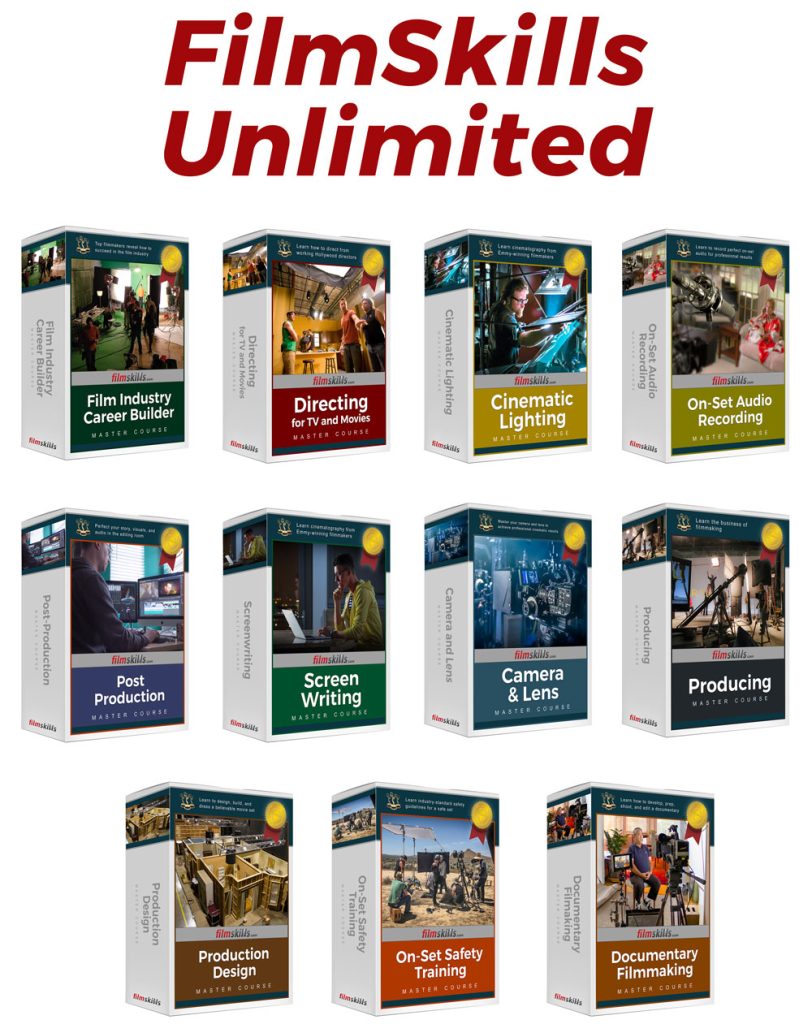The Complete Filmmaking Curriculum
Over a hundred Hollywood professionals helped build a comprehensive filmmaking curriculum.
Cinematography - Camera and Lens
In this comprehensive series, learn how the camera and lens work, and how to apply an understanding of the physics of cinematography to real-world on-set environments.
Focusing Techniques
From traditional focusing techniques of setting marks and measuring distances, to using digital focus assist tools, students learn how to set focus, overcome focus challenges, and proper on-set procedures.
Lens Focal Length
Students learn the power of the lens, how focal length affects the field of view and depth, changes in the illusion of time, plus how to work with zoom vs prime lenses, and compensate for crop factor.
f-Stops and T-Stops
This lesson covers how f-stops and T-stops are used to determine exposure, how to work with fast and slow lenses, and how f-stops are used to determine camera exposure and lighting ratios on set.
Intro to Light and Exposure
Students are introduced to the nature of light, how it’s measured, and the foundations of exposure. Complex techniques of the inverse square law, dynamic range, latitude, and contrast ratios are made simple.
Taking Care of Lenses
Students learn how to properly change lenses, remove dust and debris, protect lenses both in transit and on set, prevent condensation, and how to properly clean the imaging sensor.
Watch a free lesson from this series
The Camera Shutter
Learn how electronic shutters function, how to choose the shutter angle, global vs rolling shutters, motion blur, managing screen flicker, and how to compensate exposure.
Frame Rates
This lesson provides a comprehensive look at frame rates, interlaced vs progressive, time code, drop frame, 3:2 pull down, slow motion and time lapse, and how to calculate exposure with different frame rates.
How to Prep a Camera
Students learn how to prep the camera, matte box, follow focus, monitor, cables, batteries, media, and how to conduct lens calibration tests to ensure the camera works properly on set.
Imaging Sensor and ISO
Students learn how the imaging sensor, CCD and CMOS chips, and photosites function, plus Bayer pattern and debayering, CODECs and RAW formats, bit depths, ISO, image quality, and gain.
How to Expose a Shot
Students learn exposure techniques including zebra stripes, false color, waveform monitors, histograms, and light meters, plus how to expose skin tones, and work within the camera’s latitude and contrast ratio.
Tripods and Sliders
Learn about the equipment that can help you stabilize and support the camera. From tripods to jib arms, this module is an outstanding introduction to the gear filmmakers use to control their camera shots.
Watch a free lesson from this series
Depth of Field
Students learn how to control, measure, and creatively apply the depth of field to their shots. This lesson balances science with art, and includes several demonstrations that show how the depth of field alters the emotion of the scene. (27:29)
- How to change the depth of field
- How to adjust the aperture and maintain exposure
- How distance from the camera affects the depth of field
- Circle of confusion and how it is calculated
- Measuring the depth of field and applying calculations on set
- How to choose the depth of field most appropriate to the content of the scene
Shooting Green Screen
The all-new video tutorial methodically guides students through the process of lighting, exposing, and recording green screen footage. (25:22)
- When to choose green or blue
- Differences between chromakey and digital blue/green
- Shooting in a studio vs on location
- How to light green screen (space lights, cyc lights, LED, Kino-Flo, book lights)
- How the bit depth and compression affect a key
- Capturing in LOG vs REC709
- How to expose actors
- How to reduce spill and create a cleaner key


